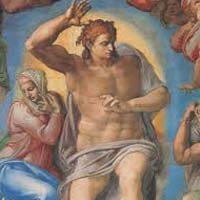
The teaching of the Holy Spirit/Paraclete. by Stephen E. Witmer
I have argued that divine instruction comes through Jesus. However, it is likely that to be “taught by God” in John 6.45 also has an internal aspect. In addition to Jesus’ teaching, divine instruction seems to be an inward teaching by which an individual is drawn to Jesus. This is indicated by the parallel between the “drawing” of 6.44, and the teaching and learning of 6.45ab. That teaching in the Fourth Gospel can be understood as an internal event is clear from the reference to the Holy Spirit/Paraclete teaching all things (14.26).
John 14.26 is in fact a significant passage for discerning how the evangelist understands divine instruction. Here, the Paraclete and Holy Spirit are clearly identified. The future tense of the verbs in 14.26 is notable; the Spirit’s activity is said to be (from Jesus’ perspective) in the future. As Schnackenburg suggest, 14.26 is directly connected with 14.25. Jesus speaks to the disciples while abiding with them (14.25), but cannot clarify everything in his limited discourse. Therefore, he promises them the future teaching of the Holy Spirit/Paraclete (14.26). In light of the many clear parallels between the Paraclete and Jesus in the Fourth Gospel, this suggests that the Holy Spirit continues the didactic role of Jesus. If my argument in this chapter is correct (i.e., that Jesus’ teaching is understood by the evangelist as direct divine instruction) then the teaching of the Paraclete, as the continuation of Jesus’ teaching, must also be understood as the fulfillment of the promise of eschatological divine instruction…
The didactic storyline of the Fourth Gospel suggests that in order to portray the didactic relationship between Jesus and the Father, the evangelist develops an analogy based on the relationship of a father and son. The ultimate purpose of the analogy is to indicate that Jesus learns so perfectly from the Father that he becomes transparent to God. Therefore, when people hear Jesus’ teaching, they receive direct divine instruction. I conclude the chapter by suggesting that the teaching of the Holy Spirit/Paraclete, because it is understood as the continuation of Jesus’ teaching, is also regarded as the fulfillment of the promise of eschatological divine instruction.”
Stephen E. Witmer, Divine instruction in Early Christianity
Coronet Books (December 2008), pp. 106-7

Leave A Comment